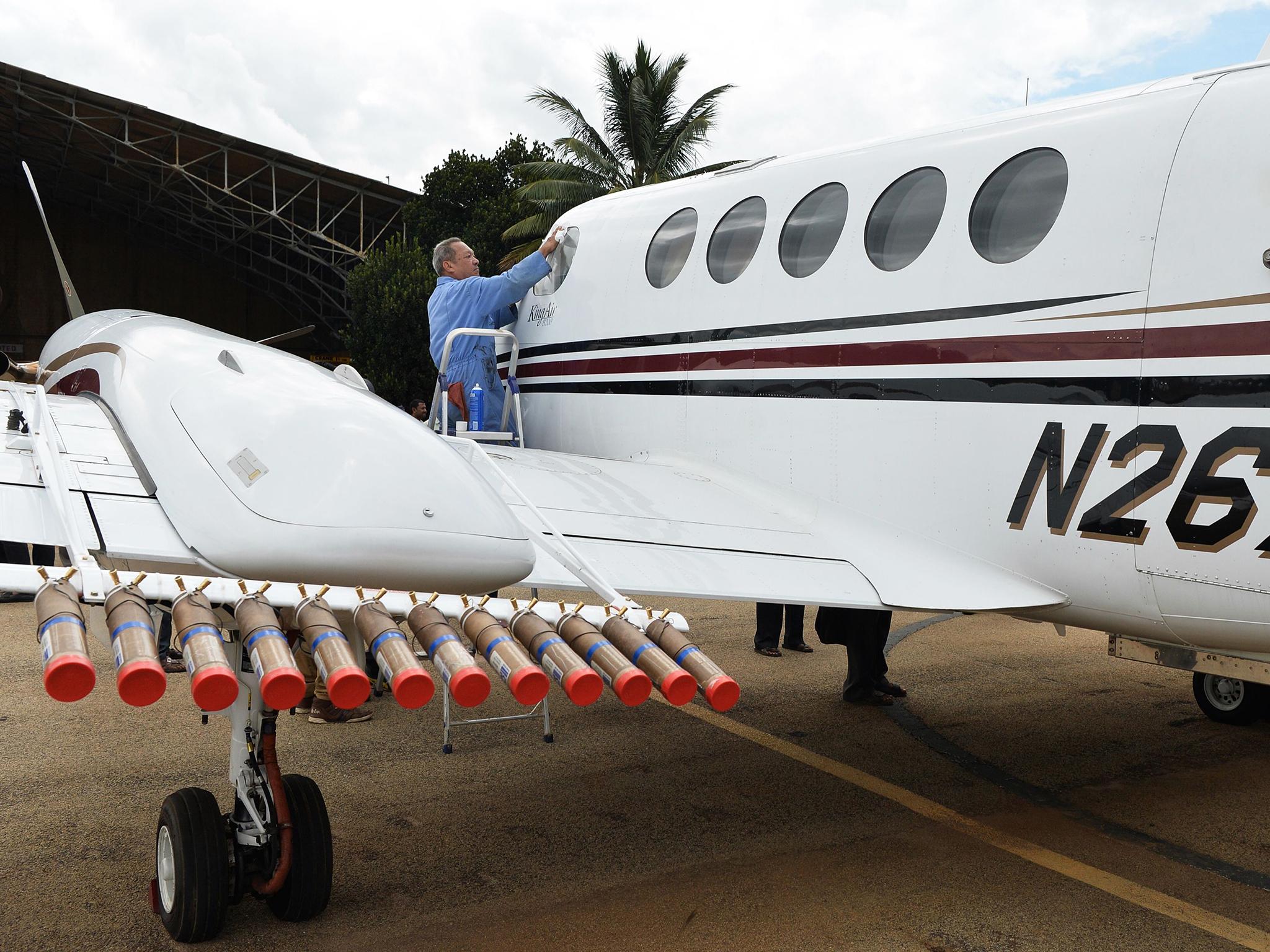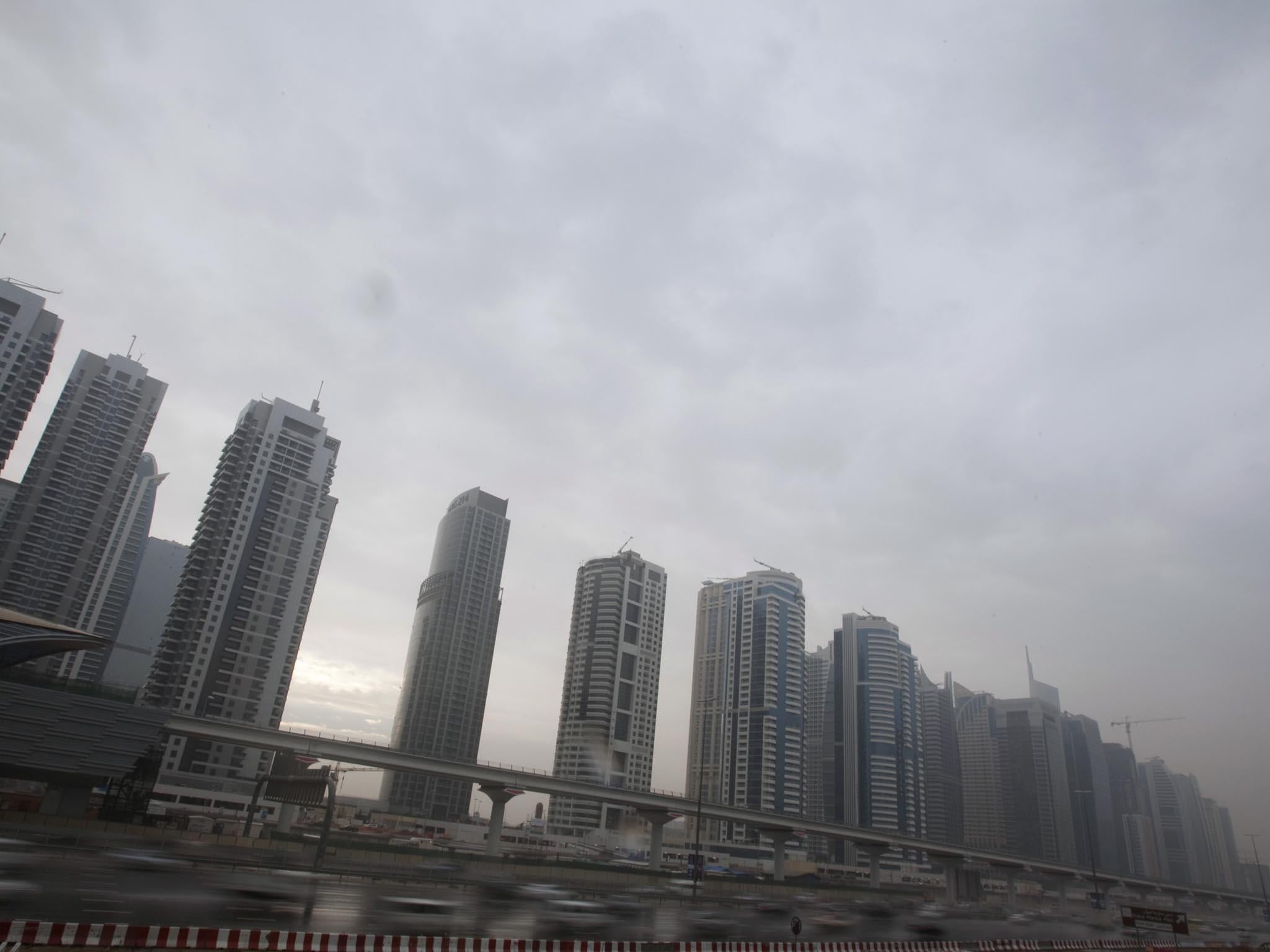Cloud seeding: Should we be playing god and controlling the weather?
Almost half of the world’s population will be at risk from water shortages by 2030. But is the answer a rather controversial method of inducing rainfall that came to life in the Forties with rocky beginnings, asks Jessica Brown

Your support helps us to tell the story
From reproductive rights to climate change to Big Tech, The Independent is on the ground when the story is developing. Whether it's investigating the financials of Elon Musk's pro-Trump PAC or producing our latest documentary, 'The A Word', which shines a light on the American women fighting for reproductive rights, we know how important it is to parse out the facts from the messaging.
At such a critical moment in US history, we need reporters on the ground. Your donation allows us to keep sending journalists to speak to both sides of the story.
The Independent is trusted by Americans across the entire political spectrum. And unlike many other quality news outlets, we choose not to lock Americans out of our reporting and analysis with paywalls. We believe quality journalism should be available to everyone, paid for by those who can afford it.
Your support makes all the difference.If you wanted a guarantee that it wouldn’t rain on your wedding day in 2015, you could have done so for the small price of £100,000. That's what Luxury holiday company Oliver’s Travels offered with a promise of “fair weather and blue skies”, which may sound like just a gimmick to get the loved-up to cough up, but behind its grand promise was the same technology being used by governments around the world to control rain.
Droughts are becoming more commonplace due to climate change, and according to the UN, almost half of the world’s population will be at risk from high water stress by 2030. Countries are trying to mitigate some of this by inducing rainfall with a method called cloud seeding.
Supercooled water in the sky needs particles such as dust or salt (with an ice crystal structure) so they can condense and subsequently fall as rain – but these can often be lacking in the atmosphere. Cloud seeding triggers this process by taking substances up in aircrafts to drop onto clouds.
Playing with the weather might sound like something from the future, but governments have been implementing cloud seeding operations for decades. The method was discovered in 1946 by Dr Vincent Schaefer, who, as Bruce Lambert wrote in his obituary of him, was “hailed as the first person to actually do something about the weather and not just talk about it”.
Schaefer was working for the US General Electric company, conducting an experiment in a cloud chamber containing a supercooled liquid cloud, as part of his research into creating artificial clouds. On deciding the chamber was too warm, Schaefer placed dry ice inside, and watched as water vapour formed a cloud around it – subsequently, and accidentally, discovering cloud seeding.
Then Schaefer and his colleague, Bernard Vonnegut, discovered that silver iodide, which is structurally similar to ice, also did the job. Now, cloud seeding uses magnesium, sodium chloride and potassium chloride.
In 2016, 56 countries had cloud seeding operations, compared to 42 in 2011, as estimated by the World Meteorological Association. China even turned to cloud seeding to keep rain away from the 2008 Beijing Olympics, by inducing rain come before opening ceremonies.

But most of the time, the desired effect is more rain, not less. The Wyoming Weather Modification programme concluded that cloud seeding can boost precipitation by 5 to 15 per cent, and in its summary of cloud seeding activities in 2015, the Texas Department of Licensing and Regulation reported that seeded thunderstorms in the state lasted 20 minutes longer than untreated ones, and rain from seeded storms was almost one-and-a-half times that of nearby storms that weren’t treated.
Cloud seeding has also had some unforeseen and undesirable effects. China used cloud seeding in 2009 to attempt to end a drought, but it led to a sudden temperature drop, causing closed highways and road and traffic delays in Beijing. And in 1947, a hurricane on the east coast of the US was seeded with 102kg of dry ice, before going from a northeasterly to a westerly direction into Georgia, where it caused severe damage. The General Electric corporation was sued for damages.
One of the concerns surrounding cloud seeding is its history with warfare. It's rumoured that the US military used cloud seeding during the Vietnam War to cause a monsoon over the Ho Chi Minh trail, calling it Operation Popeye.
And in 2001 a BBC Radio 4 history investigation broadcast previously unreleased findings showing that rain experiments were going on between 1949 and 1955, despite previous denials they had occurred before 1955. This included Operation Cumulus, which occurred between 4 August and 15 August 1952, the day flash floods across the Devon village of Lynmouth killed 35 people.
Nothing has been proven, but the two have been linked. Aeronautical engineer and glider pilot, Alan Yates (who was involved in the operation) said after being told the cloud seeding operation had produced rain that it was not until the BBC news bulletin [about the Lynmouth flood] was read later on, that a stony silence fell on the company.
According to an article by John Vidal for The Guardian, declassified minutes from an British air ministry meeting in 1953 showed discussions about cloud seeding having the potential to “explode an atomic weapon in a seeded storm system or cloud…. [which] would produce a far wider area of radioactive contamination than in a normal atomic explosion“.
But despite some countries agreeing to the UN’s Convention on the Prohibition of Military or Any Other Hostile Use of Environmental Modification Techniques in 1977, the UK government still thinks cloud seeding “may be a factor in conflict situations or a reason to precipitate conflict”.
A 2010 report by the Science and Technology Committee states that the line between peaceful and hostile usage of cloud seeding is “very thin,” and a country facing drought and humanitarian crisis, for example, may perceive a lack of rain as theft by a neighbouring county.
Some say cloud seeding is playing god, but Darin Langerud, director of North Dakota water commission’s atmospheric resource board, says messing with weather isn’t anything new. “All humans influence nature in some fashion, whether its driving a car and emitting pollutants, adding fertilizers to crops, or flipping on a light switch that’s powered by natural resources,” he says; although whether two wrongs making a right stands as a valid argument remains to be seen.

And in response to concerns over the danger of spraying chemicals into the air, Langerud says, “Cloud seeding chemicals such as silver iodide have been proven not to have negative impacts on the environment in the small concentrations being used”.
Aside from worries about its misuse, many doubt whether it works at all. US researchers concluded in 2003 that there was little evidence to suggest cloud seeding actually works, and said more researched was needed. And 15 years on, the evidence is still relatively scarce.
One country undeterred by such concerns, and leading the way with international cloud seeding research is the United Arab Emirates, whose government has just launched a $5m (£3.6m) programme, the UAE Research Program for Rain Enhancement Science (UAEREP), to research rain enhancement.
Most of the Arab countries are classified as having “extreme water scarcity” according to the UN, and the UAE has been using cloud seeding since the 1990s to keep up with increased demand for fresh water, due to population growth, economic development and lifestyle changes.
The country is now one of the world’s biggest per capita consumers of water, and without cloud seeding, the only other water source, apart from low levels of natural rainfall, is desalination, a process requiring 10 times more power than treating surface fresh water.
The UAE’s National Centre for Meteorology and Seismology reportedly told Gulf News that cloud seeding success rates are between 15 and 30 per cent, depending on whether the atmosphere is cloudy or clean. In the first three months of last year, the country carried out 101 cloud seeding operations, compared to 77 over the same period in 2014, according to Arabian Business, who wrote that during March last year when the country had two months of “unusually wet weather” and more rainfall was recorded in Dubai and Al Ain than when records began in 1977.
But this increased rainfall is having less than desirable effects on a country ill-equipped for such heavy rainfall. In December last year, rain caused almost 600 accidents in Dubai, while in the city of Jeddah in Western Saudi Arabia was damaged by floods in 2009 that reportedly killed more than 100 people; igniting questions of why the country doesn’t have effective drainage systems in place.
The country’s first cloud seeding mission this year caused flooded roads in Abu Dhabi. But research and technology is continuing to improve methods, according to Alya Al Mazroui, programme director at UAEREP, who says there is “growing interest” in cloud seeding.
“One project supported by the programme has already filed a provisional patent with the United States Patent and Trademark Office for a new application of nanotechnology to cloud seeding,” he says.
“Other researchers are developing innovative algorithms employing various types of remote sensors to find and track clouds suitable for seeding and most likely to offer a higher rain yield”.
Another method the programme is supporting is the use of drones to alter the electrical properties of clouds to induce electrical seeding. But Al Mazroui insists safety is a priority: "The significant technological advancements we are now seeing could ensure that rain enhancement becomes ever safer and more affordable,” he says.
Join our commenting forum
Join thought-provoking conversations, follow other Independent readers and see their replies
Comments